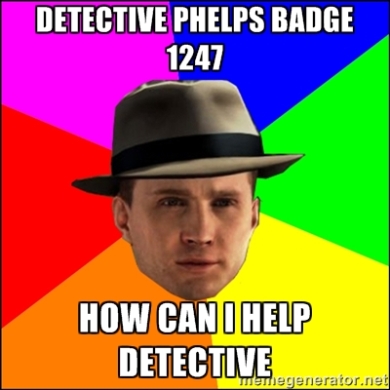Now that I’ve stepped away from Twitter and Facebook (more on that later) and I’ve finished up grading for the rest of the semester, I hope to devote more time to the blog.
Recently, I decided to give Assassin’s Creed 3 and L.A. Noire, games that I found to be uber disappointing my first time around, another go. I did the same for Deus Ex: Human Revolution and fell in love with the game my second playthrough, mostly because I opted for another playstyle instead of run & gun (Human Revolution is a miserable first person shooter).
Assassin’s Creed 3 is still, unfortunately, a Very Bad Game. Never have I played a game that has such a strong beginning only for it to take a running nose dive into the abyss of terrible design decisions. Haytham Kenway is the game’s greatest success and costliest mistake. Following his cleverly written, well-designed section with Connor, thus giving the player the feeling that they’re starting the game over again, is terrible. Connor is boring, his tutorial sections tedious, and as for AC‘s characteristic glitches…well, they’ve never been in finer form. I’ve had Connor sink through floors, killed by guards that I’ve already put down, and just the ol’ classic console lockup.
3‘s biggest problem is that it takes all of its dramatic storytelling cues from cinema. In itself, that’s not necessarily a bad thing–just look at The Last of Us–however there are sections where the player must sit and watch this longgggggggg cutscene that segues into level where the player must tail a target and listen to their exposition, and the player MUST ABSOLUTELY not deviate from what is a glorified cutscene where the only interactivity comes from sticking to the shadows lest they be slapped with a mission restart. The overblown cinematic nature of the game makes it feel more like Beyond: Two Assassins than an Assassin’s Creed game. Luckily, they fixed most of the problems that 3 had with Assassin’s Creed 4, and although the cinematic nature is still there, the melodramatic, tragic vibe of 3 has been traded for the swashbuckling, witty wordplay of Pirates of the Caribbean. Ultimately, a wise choice.
I gave up about six hours into my second playthrough–the tutorial was still going on. Sorry Ubi, but I don’t know what the hell you were going for with that
L.A. Noire, surprisingly, is a much better game the second time around. Part of this arises from knowing what to expect: the title is a bit deceptive. The game does have a seedy noir atmosphere to it, I guess, but it is more akin to cop dramas, like The Wire, than any of Hammett or Chandler’s books. When I played the game the first time, then a young undergraduate in love with detective literature, I was crushed by this difference.
 Also, let’s get this out of the way: Cole Phelps is a huge jerk. He’s a self-righteous, judgmental guy who looks down on his partners and is, in the end, no better than the men he’s berated. I found this to still be true for my second playthrough, but I also had more sympathy for Cole. On the most basic level, Cole is earnestly trying to clean up the streets for L.A. to atone for his sins. Selfish? Certainly, but of all the selfish reasons in the world, there are few more noble. Los Angeles is his cilice.
Also, let’s get this out of the way: Cole Phelps is a huge jerk. He’s a self-righteous, judgmental guy who looks down on his partners and is, in the end, no better than the men he’s berated. I found this to still be true for my second playthrough, but I also had more sympathy for Cole. On the most basic level, Cole is earnestly trying to clean up the streets for L.A. to atone for his sins. Selfish? Certainly, but of all the selfish reasons in the world, there are few more noble. Los Angeles is his cilice.
The cases in the game, functioning as levels, are best played a few at a time, a quality that most binge gamers (like myself) find irritating. However, the level of detail in each case, from the characters’ facial expressions to the fine print on the coupon Cole just picked up, is extraordinary.
Noire is still somewhat boring in some sections, and a few cases are duds, but on the whole I’m having a much better time with the game than I did two summers ago.
I also really want that “How Can I Help, Detective?” soundbyte for a ringtone for some reason.

